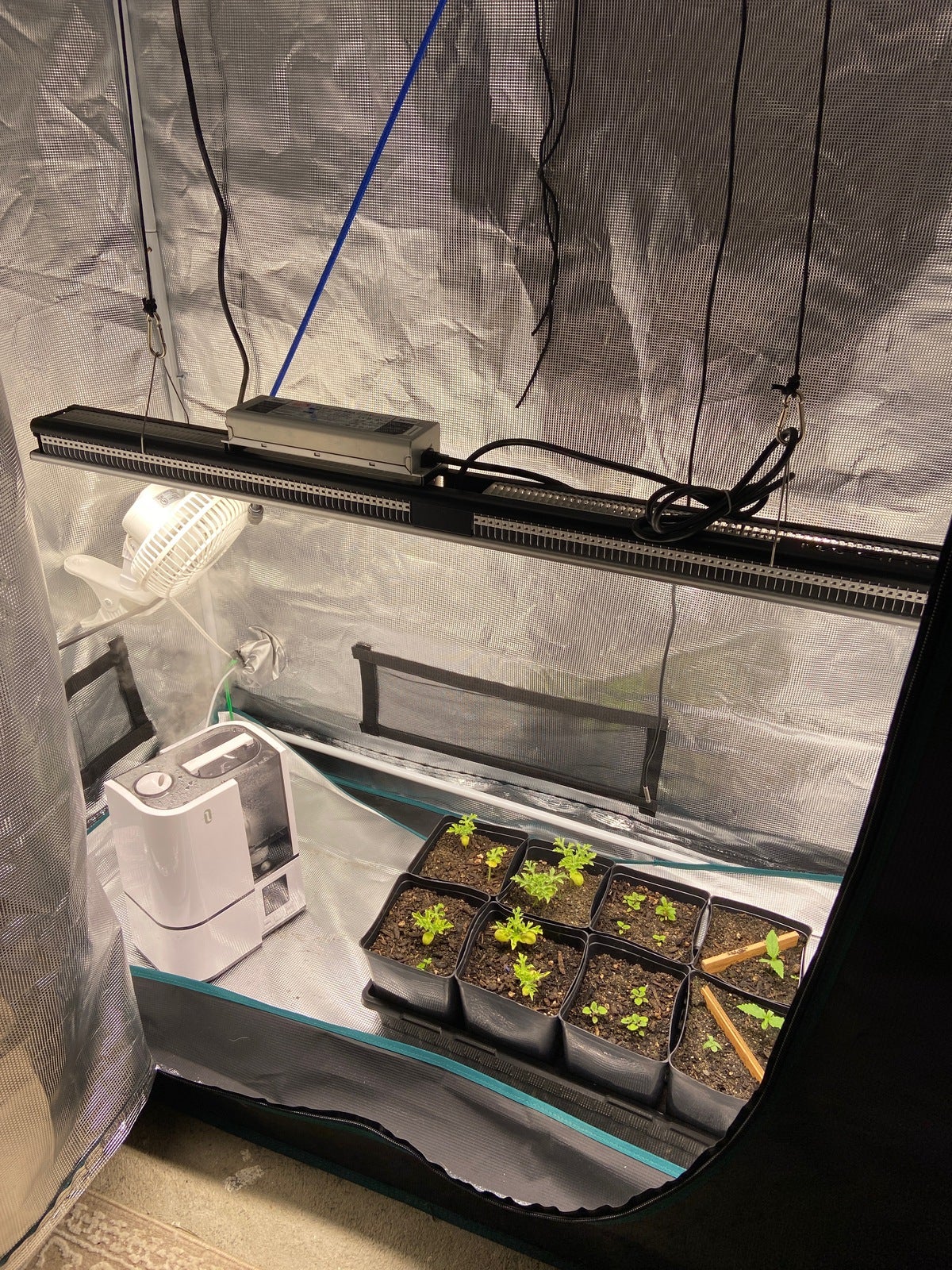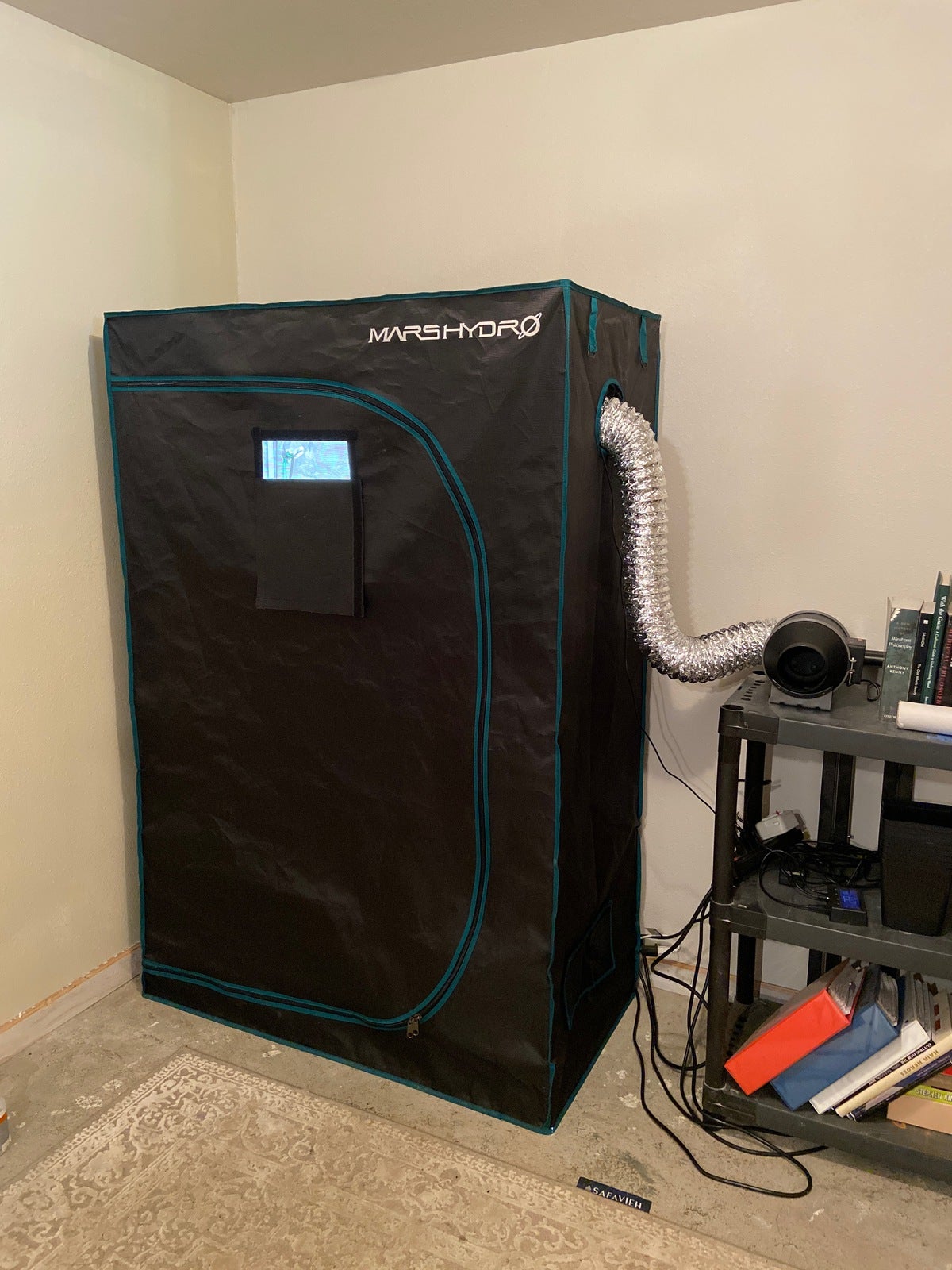Prior to quarantine, Jackson, a 26-year-old computer programmer in Washington, had never gotten high, not even once. He was “always kind of interested in smoking weed,” though, and after a few monotonous weeks in isolation, he finally sparked up a joint.
It was love at first drag (well, at least after a short bout of heavy wheezing).
Jackson has been smoking weed almost daily since then, and he says getting high helps him brave the boredom of quarantine and be “more patient” with his quarantine partner as they maintain a more confined lifestyle. Jackson has become such a weed enthusiast during lockdown that he even started growing his own. “I was actually interested in growing before I was interested in smoking,” he says.

For anyone without a green thumb, growing weed may seem daunting. But Jackson, an amateur, has been pleasantly surprised by his recent success, and he recommends cannabis cultivation to anyone in need of a quarantine project. (Maybe check your state laws to make sure you can legally grow weed first, though.)
Now, there are tons of ways to grow weed (seriously, the weed-growing community takes plant cultivation to a transcendent level of nerdom). But as a beginner, your best bet is to start a small indoor grow in some kind of basic grow tent — that way, you can eliminate the need to deal with any unruly outdoor elements, like the sun, the rain and your incessantly nosy neighbors. Here are the main pieces of equipment you need for a basic, budget weed-growing setup (all together, a cheap build should cost you a couple hundred bucks, at most).
A Grow Tent
This is where your weed (and pretty much everything else involved) will spend its entire lifetime. Having a grow tent is essential for controlling and maintaining the atmosphere in which your weed will be growing, which is of the utmost importance. There are plenty of cheap options out there, and remember, the bigger the tent, the more weed you can grow (duh).

A Light Source
As you may already know, most plants require some kind of light to grow, and that includes weed. LED lights can be kinda pricey, but they tend to be good for indoor growing because, as Jackson explains, they produce a safe amount of heat (i.e., not very much) and generate a relatively full spectrum of light, which can result in bigger yields and just generally better quality cannabis.
An Exhaust Kit (or a Fan)
Weed plants need fresh air to thrive, so you need something to keep a steady stream of air flowing through your grow tent. While this can be achieved cheaply with a well-placed, clip-on fan, exhaust kits are generally more effective and prevent the potent odor of weed from permeating throughout your apartment.
Some Kind of Climate Control
For starters, you should always keep some kind of thermometer and humidity gauge in your tent to keep tabs on the general conditions. But you may also need a humidifier or dehumidifier, depending on your local climate and the humidity inside your home. As a rule of thumb, young plants thrive in high humidity, whereas older plants flourish in low humidity. That said, you need to pay attention to the unique humidity levels of your tent, hence the humidity gauge.
Seeds, Soil and Pots
Now comes the fun part of choosing what kind of cannabis you want to grow. When it comes to how weed grows, Jackson explains that there are two main strain types to consider: Photoperiod and autoflowering strains. Photoperiod plants require a change in the light cycle in order to flower and produce buds, which means, at some point in the growing process, you need to change how much light your plants are getting. Autoflowering plants, meanwhile, switch from a vegetative state to the flowering stage with age, as opposed to the ratio of light — and thus, require less maintenance. The downside to autoflowering plants, though, is that they tend to produce smaller yields.
Whichever strain you choose, Jackson recommends buying seeds online through a website called Seedsman (and if you opt for a photoperiod strain, grab yourself a cheap plug timer so you can control the lighting schedule in your tent when that time comes).
For beginners, just about any organic, pre-fertilized soil is a good bet. You can also use a regular soil mix, then supplement your plants with liquid nutrients (i.e., fertilizers) as the soil becomes depleted.
When it comes to pots, the most important thing is having plenty of drainage, which can be achieved by simply drilling holes in the bottom of a five-gallon bucket. But if you want something a little fancier (and pricier), you can opt for “smart pots,” which are designed to enhance airflow to the roots of your plant.
How to Grow Weed at Home
Now that you have everything you need, here comes the tricky part of actually getting your plants to grow. As a first-timer, Jackson highly recommends tuning into YouTube and following along with a weed-growing YouTuber of your choice — that way, you can see exactly how they do things throughout the entirety of the grow process. You should, however, expect to check on your plants at least every two or three days to make sure the soil is moist — but not too moist! — and that your weed is indeed doing well.
The average grow period from seed to nug can take anywhere from three to five months, then you need to dry and cure your weed, which could take another few weeks. So yeah, growing weed requires some patience. But if done correctly, besides being a fun project, you can easily pay for your weed-growing setup by saving money that you may otherwise have spent at the dispensary. “You can get multiple ounces from a plant, and I pay around $30 for an eighth,” Jackson explains. “That’s hundreds of dollars per plant.”
Beyond being a cheap, albeit laborious source of weed, though, Jackson says, “It’s important to know how to grow things from seeds, because when the apocalypse happens, there are only going to be seeds left over.”
And if the apocalypse does indeed happen — which, hey, the world has been weird lately — weed, of course, will be a necessity.

